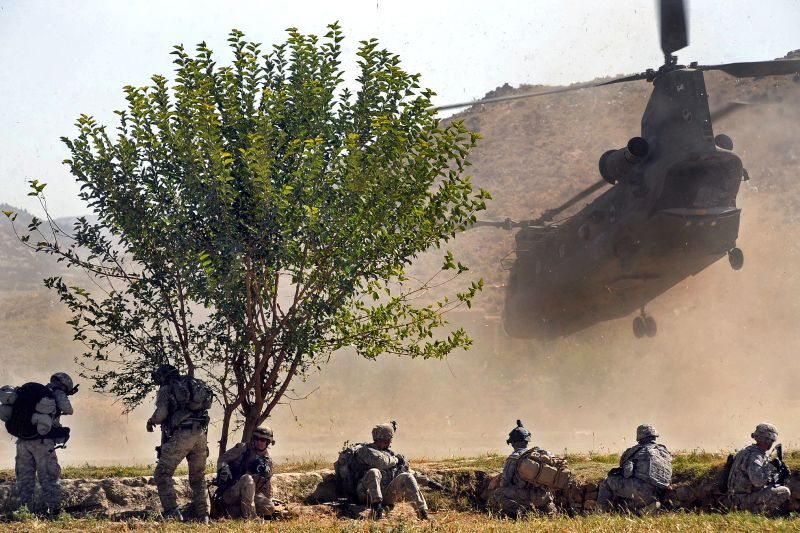The Taliban lured US forces into an elaborate trap to shoot down their helicopter, killing 30 American troops in the deadliest such incident of the war, an Afghan official said Monday.
US President Barack Obama pledged that the incident — which killed 38 people — would not keep foreign forces from prevailing in Afghanistan, and the Pentagon called the downing of the Chinook a “one-off” that would not alter US strategy.
The late Friday attack marked the biggest single loss of life for American and NATO forces since the US-led invasion of Afghanistan toppled the Taliban in late 2001, shortly after the September 11 attacks.
The loss of the Chinook during an anti-Taliban operation southwest of Kabul dealt a blow to elite US special forces, which had 25 members on board — 22 US Navy SEAL commandos and three Air Force Special Operations Forces.
Five US Army personnel, seven Afghan commandos and an interpreter also died.
A senior Afghan government official told AFP on condition of anonymity that Taliban commander Qari Tahir lured US forces to the scene by tipping them off that a Taliban meeting was taking place.
He also said four Pakistanis helped Tahir carry out the strike.
“Now it’s confirmed that the helicopter was shot down and it was a trap that was set by a Taliban commander,” said the official, citing intelligence gathered from the area.
“The Taliban knew which route the helicopter would take,” he continued.
“That’s the only route, so they took position on the either side of the valley on mountains and as the helicopter approached, they attacked it with rockets and other modern weapons. It was brought down by multiple shots.”
The official, who spoke on condition of anonymity as he was not authorised to discuss the issue, also said President Hamid Karzai’s US-backed government “thinks” the attack was retaliation for the May killing of Osama bin Laden.
The Taliban themselves did not make such an assertion on claiming responsibility for the attack, which took place in the Taliban-infested Sayd Abad district of Wardak province.
In Washington, Obama said the loss of the 30 American troops would motivate their colleagues.
“I know that our troops will continue the hard work of transitioning to a stronger Afghan government and ensuring that Afghanistan is not a safe haven for terrorists. We will press on and succeed,” the US president said.
Colonel Dave Lapan, a Pentagon spokesman, said he would “caution people against reading too much into a single combat incident.”
“At this point, it’s a one-off incident,” he told reporters, adding it did not amount to “any kind of watershed or trend.”
“We still have the Taliban on the run. We’ve reversed the momentum that they had but they’re still going to inflict casualties,” Lapan said.
When questioned about whether the attack was linked to a trap laid by a Taliban commander, the militia’s spokesman Zabiullah Mujahid said: “We have used various tactics over the past 10 years. This could also be a tactic.”
The NATO-led International Security Assistance Force (ISAF) said the cause of the crash was still being investigated but issued a statement giving details of the moments before the fatal incident.
“The operation began as a security search for a Taliban leader responsible for insurgent operations in the nearby Tangi Valley,” it said.
The first wave of ISAF ground troops then exchanged fire with insurgents, killing several of them.
“As the insurgents continued to fire, the combined force on the ground requested additional forces to assist the operation,” the statement added.
“Those additional personnel were inbound to the scene when the CH-47 (Chinook) carrying them crashed, killing all on board.”
Afghan officials said an insurgent rocket downed the helicopter, which was said to have broken into several parts after being hit.
In eastern Afghanistan on Monday, another helicopter made a “hard landing” in Paktya province, although no one was injured and there were no reports of insurgent fire, ISAF said.
There are currently around 140,000 foreign soldiers in Afghanistan, including about 100,000 US troops.
All international combat troops are due to leave by the end of 2014, but intense violence in recent months, including a series of assassinations in the south, has raised questions about the capability of Afghan forces.










